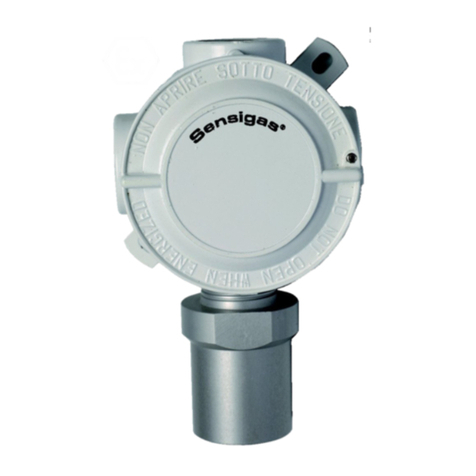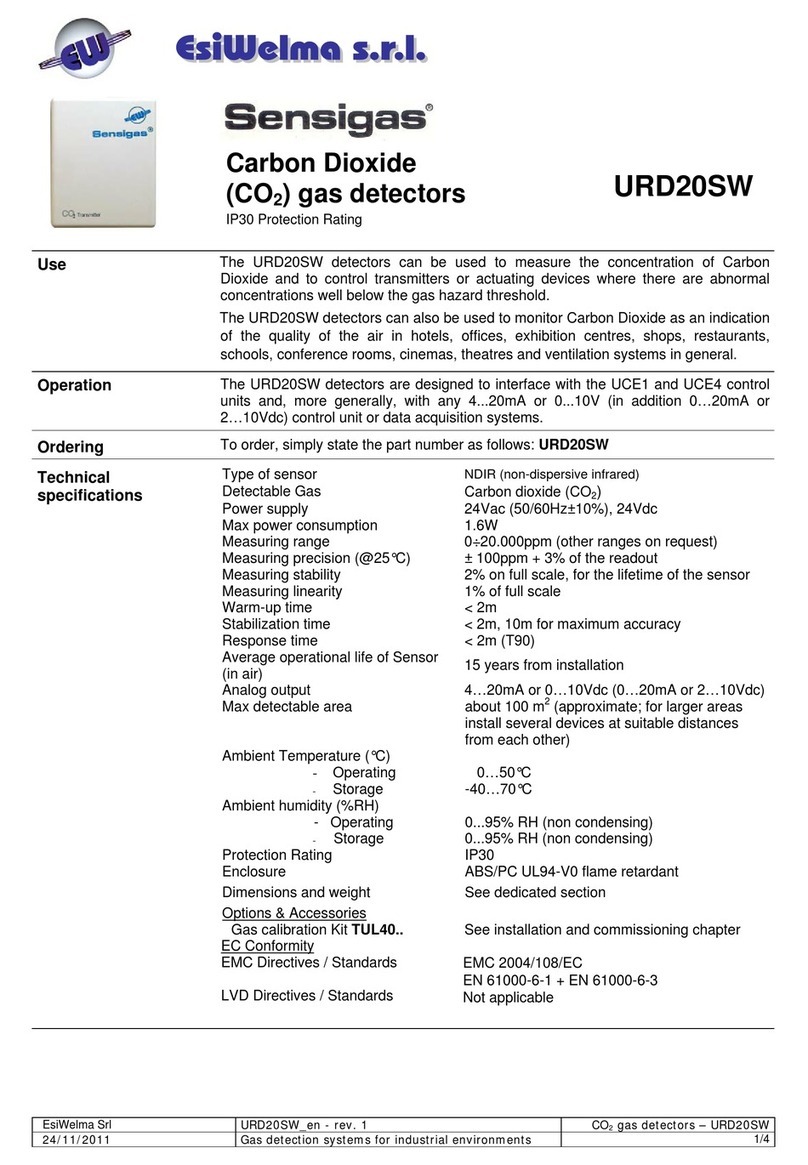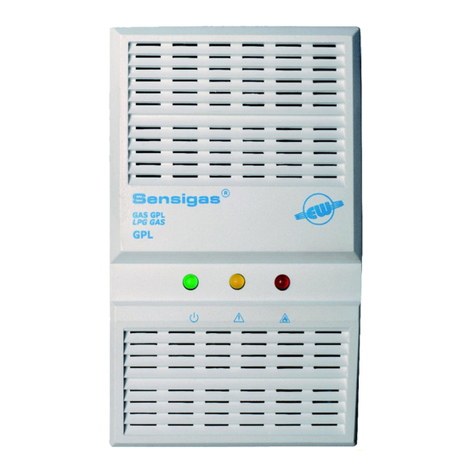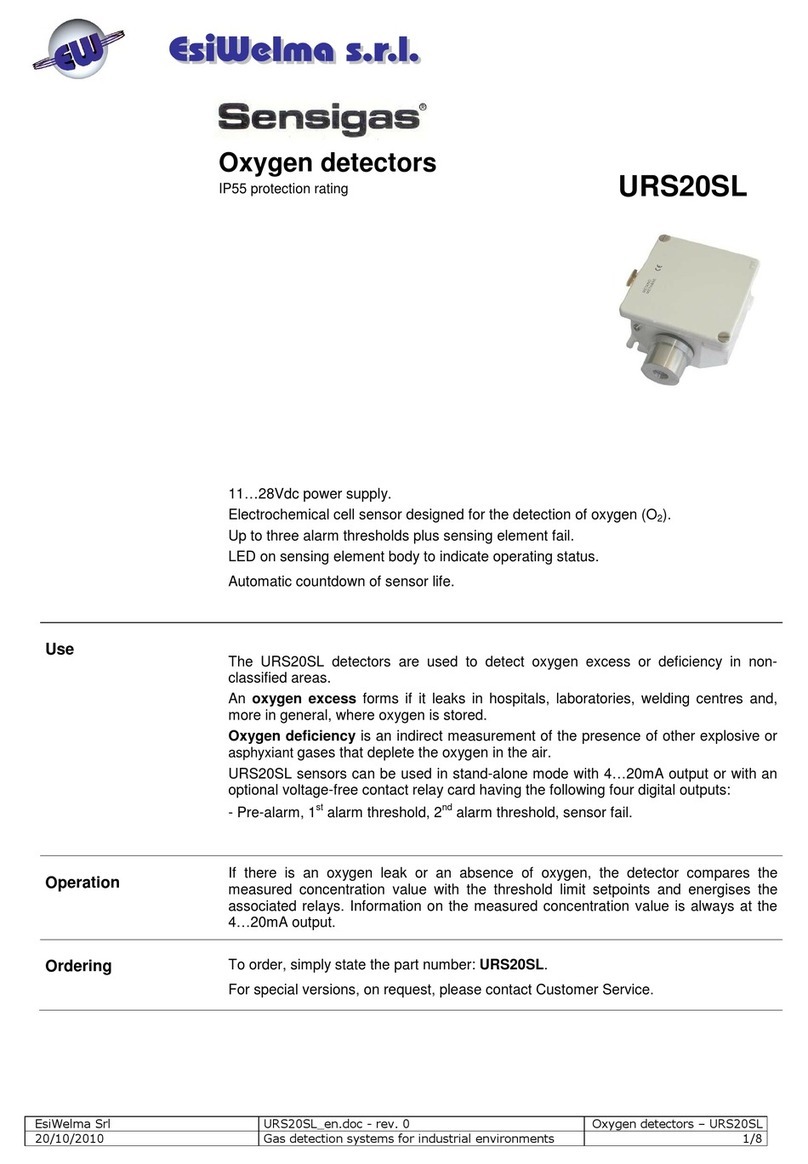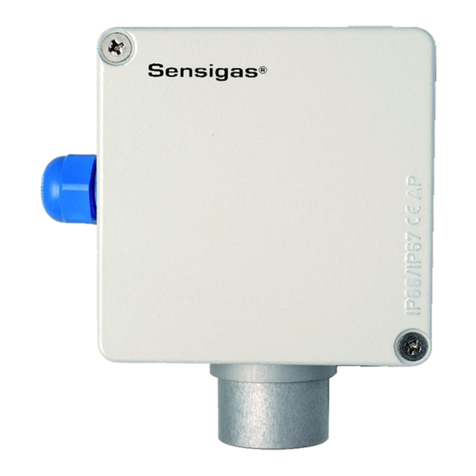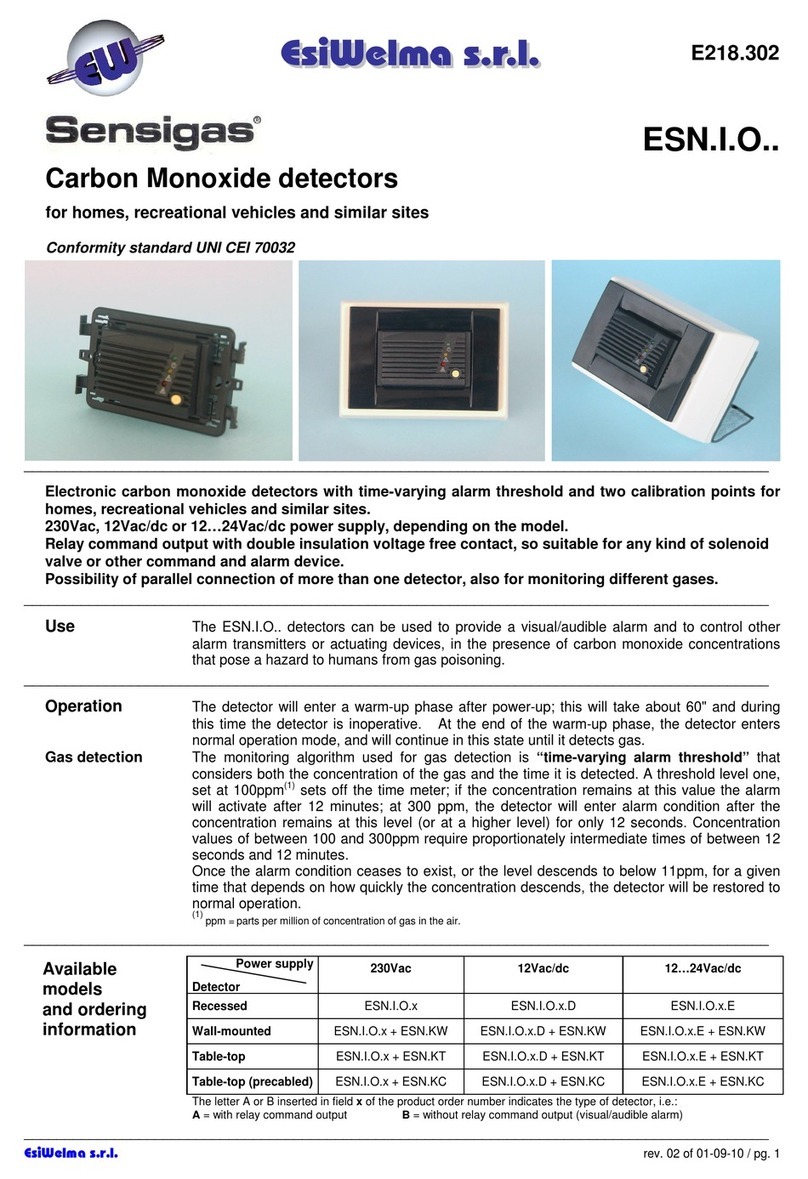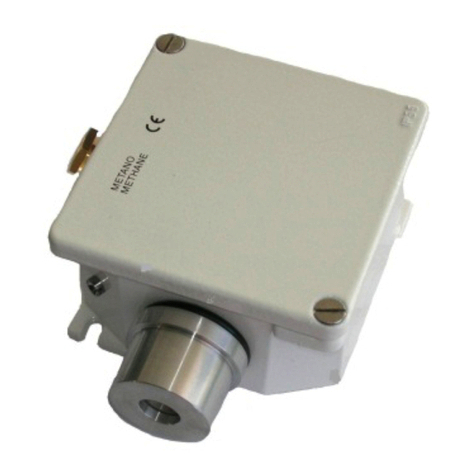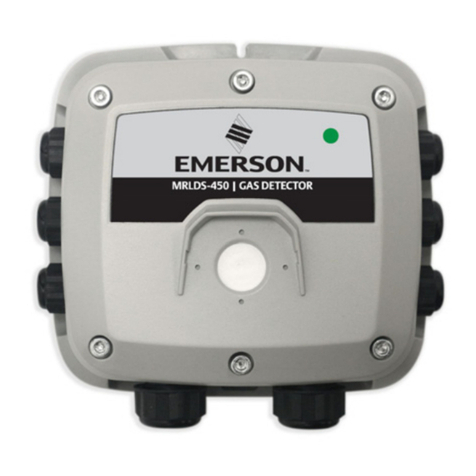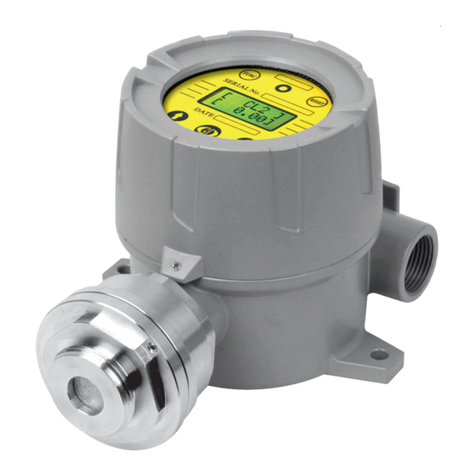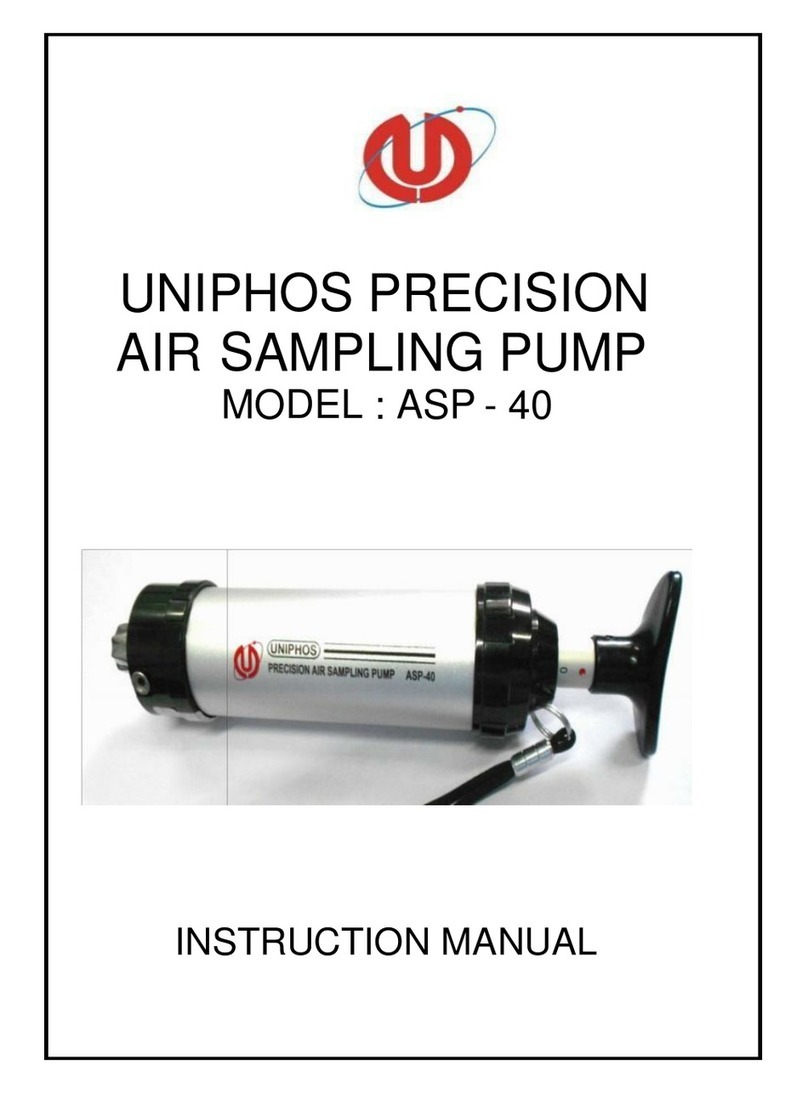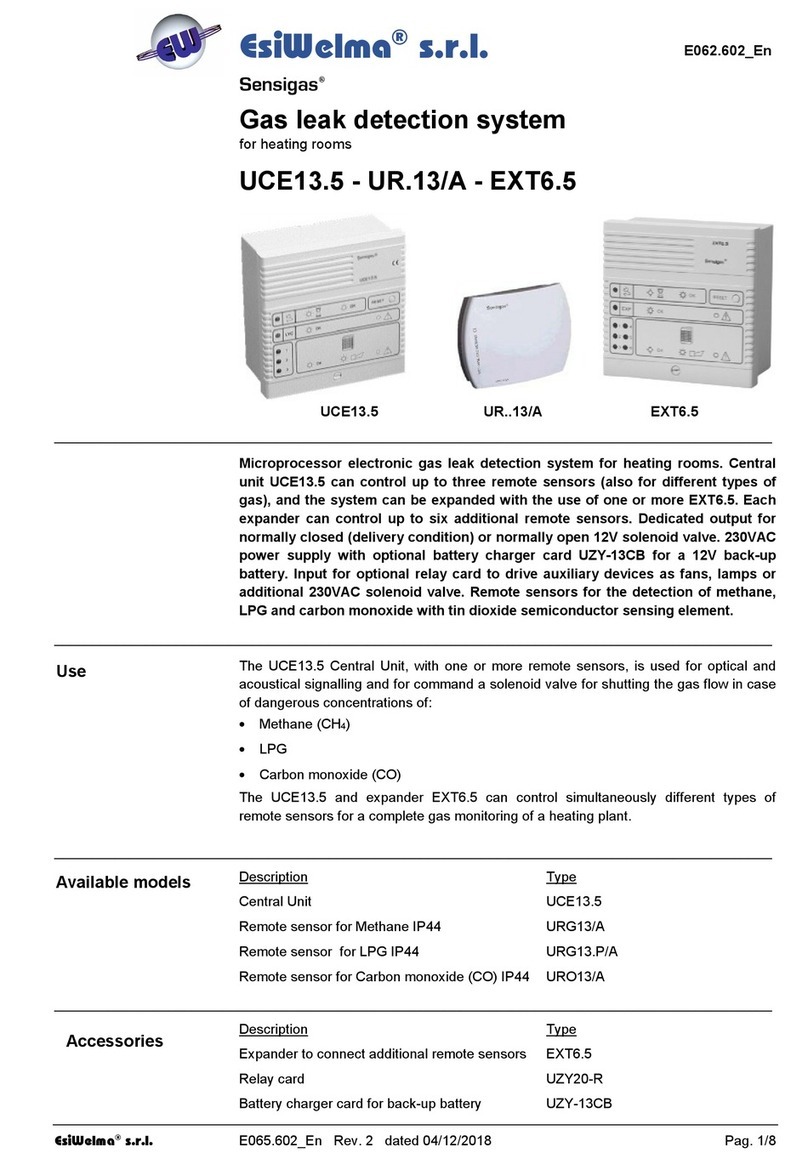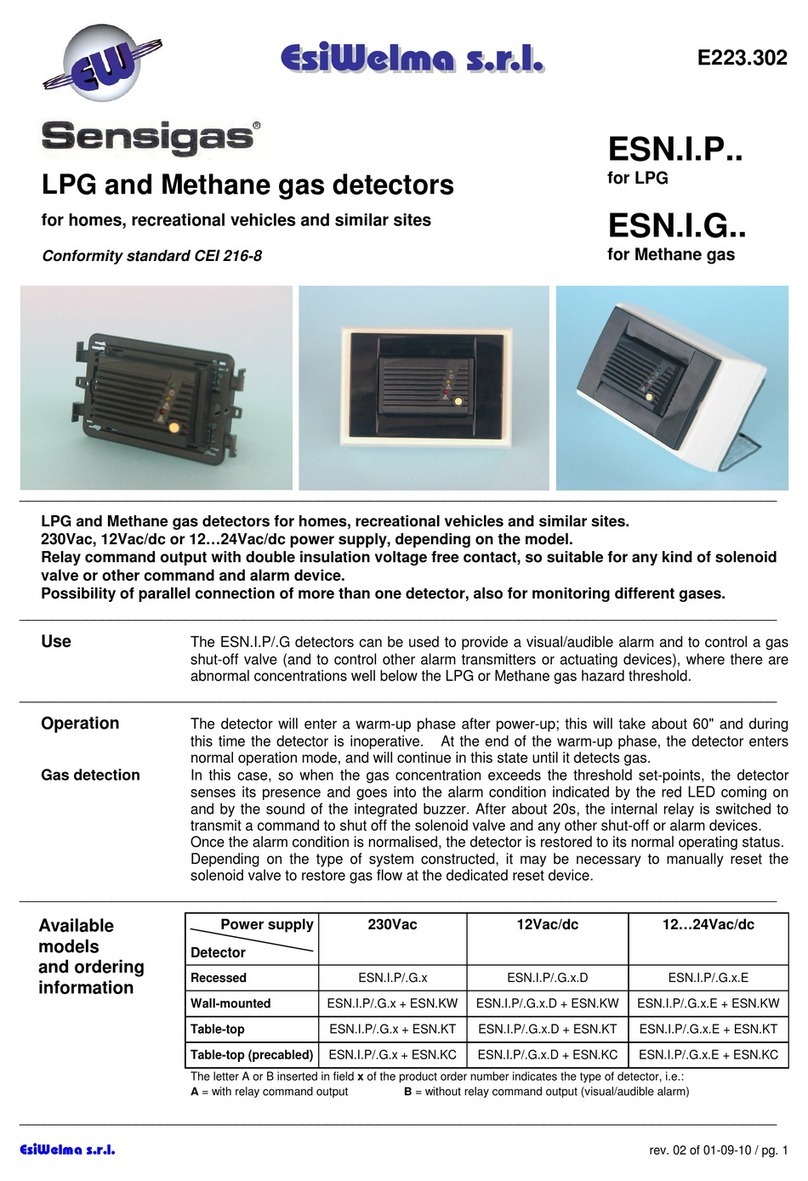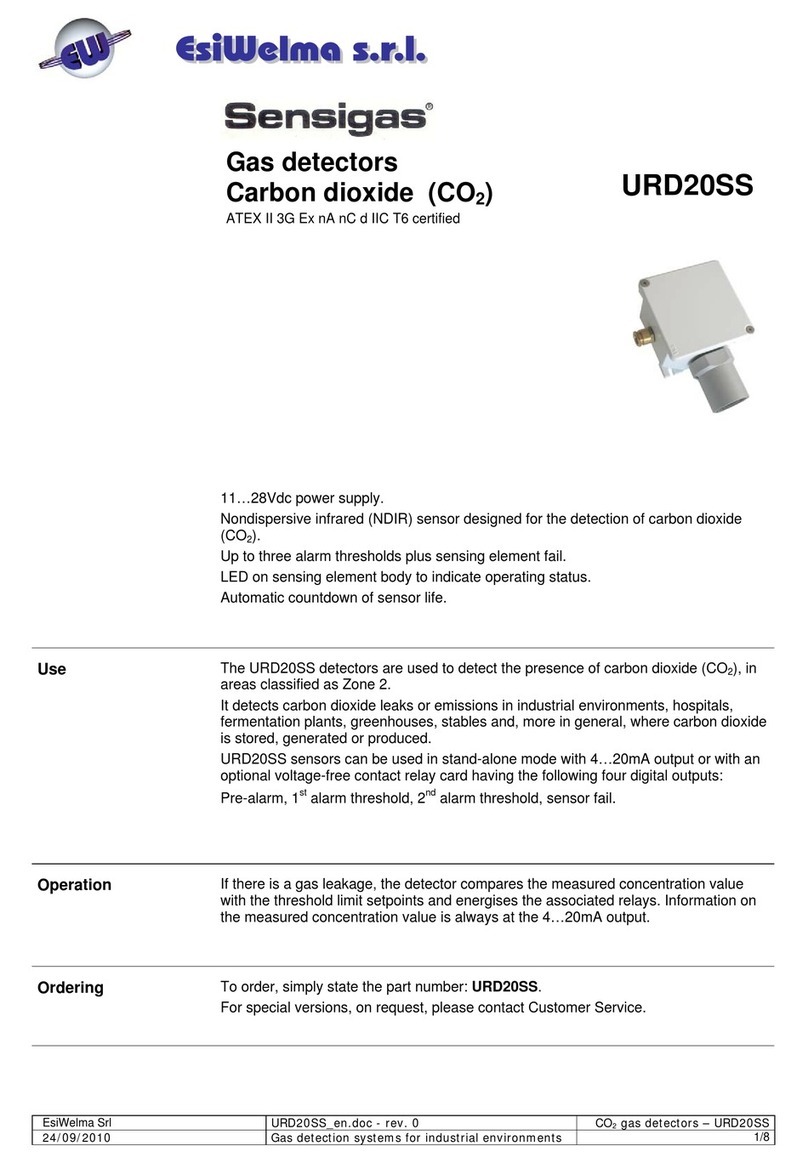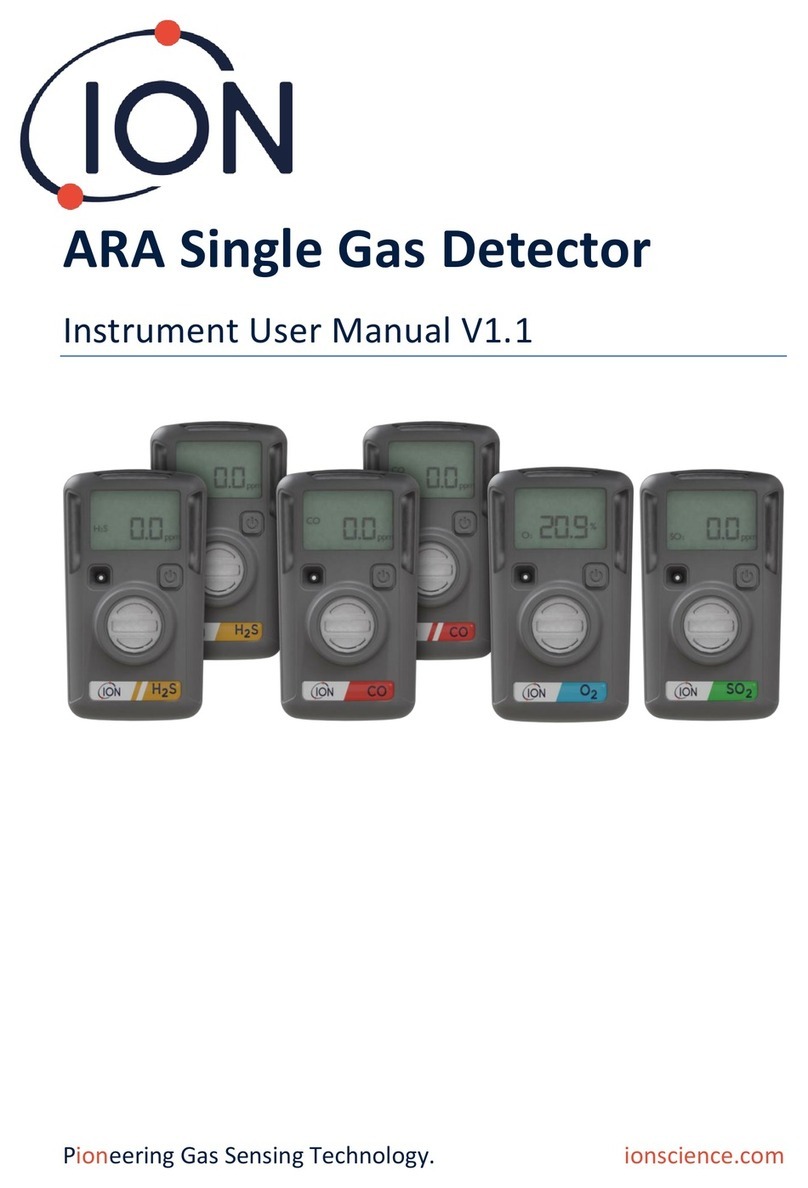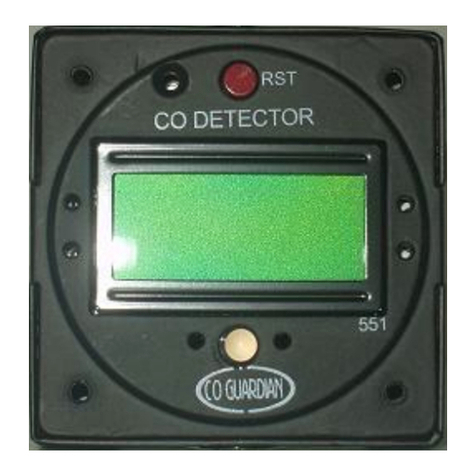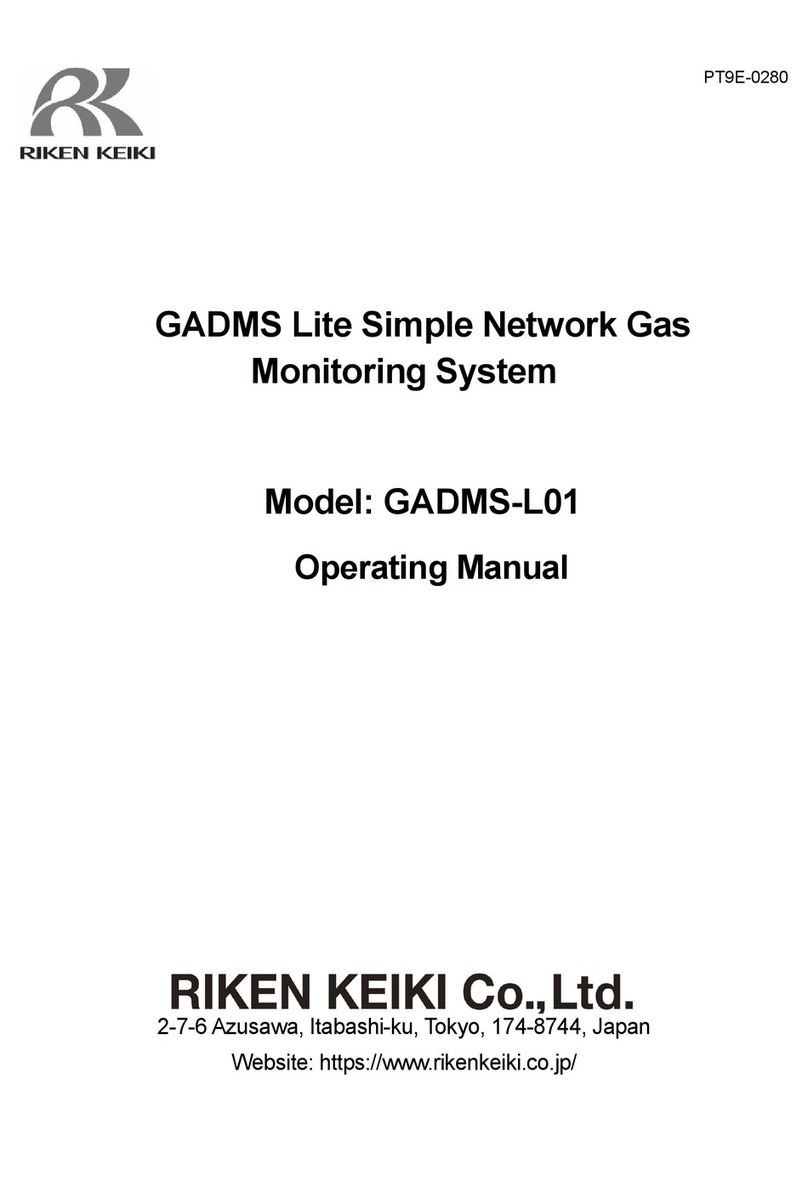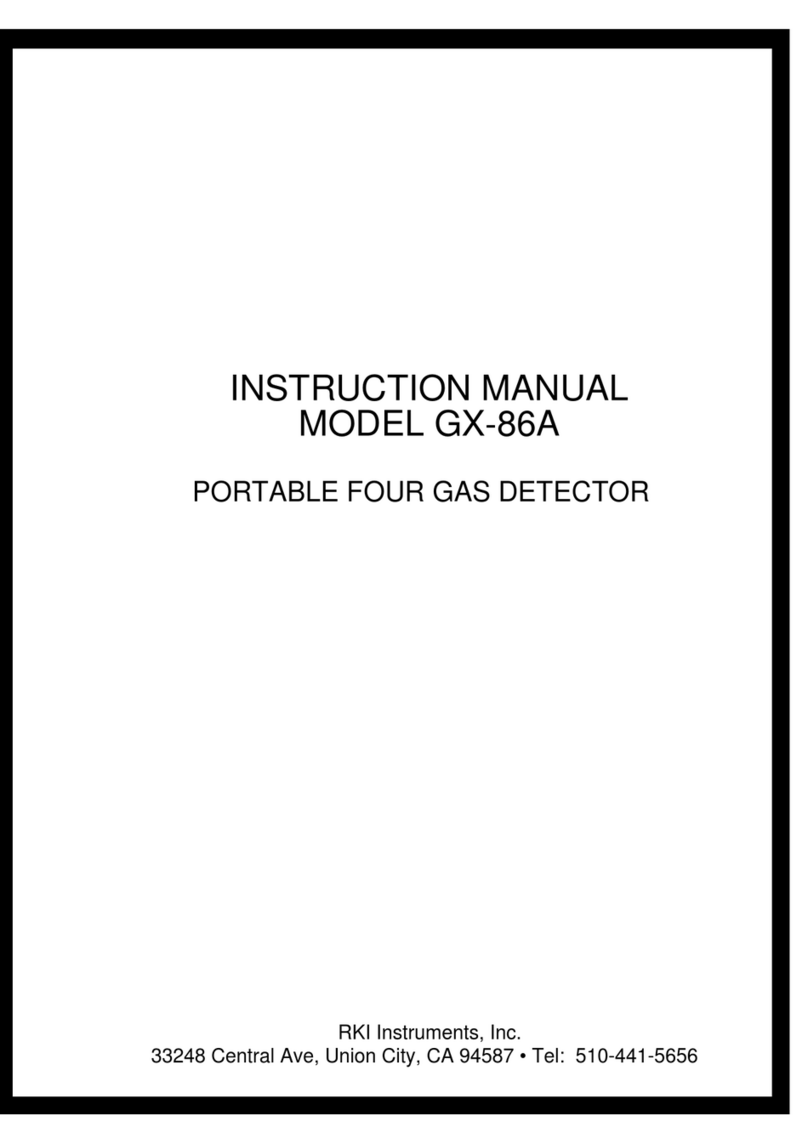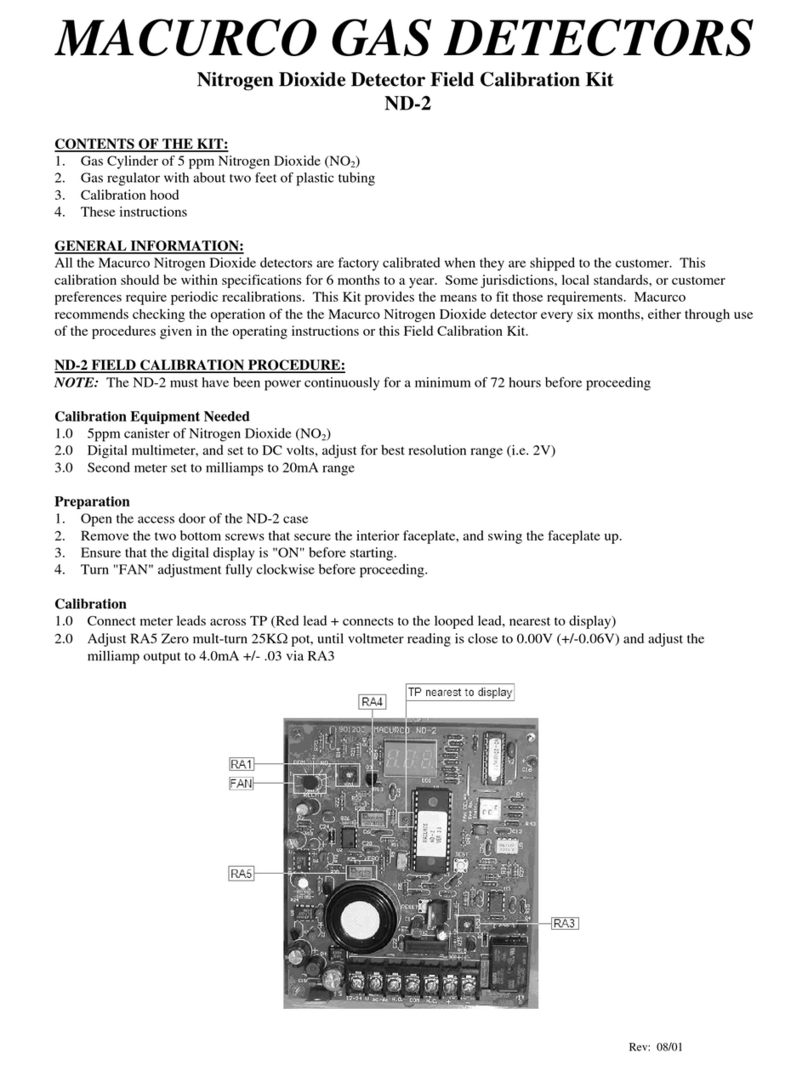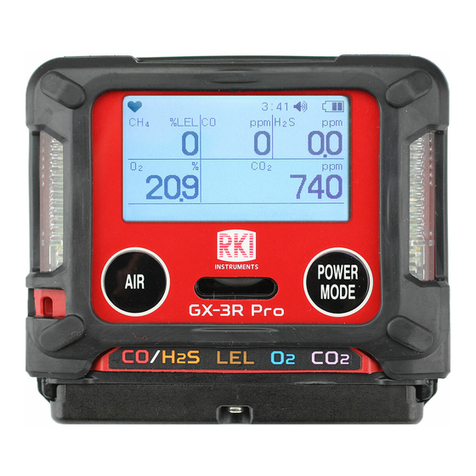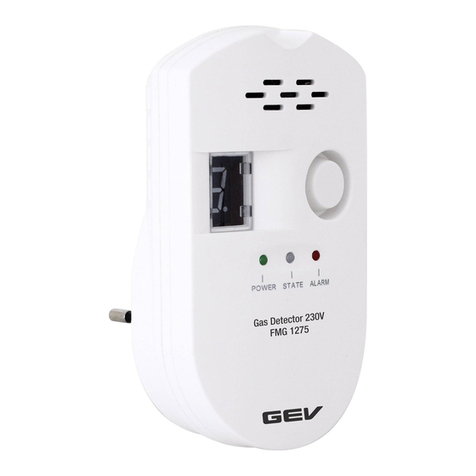
CO2gas detectors –URD20SE
Gas detection systems for industrial environments
Electrical Installation
Terminal board and
electrical connections
Cabling:
Configuration:
4…20mA Output
reference selection:
4...20mA signal
operating mode
configuration:
Setting threshold limit
values:
CAUTION: Make the area safe and make sure that the device power supply is
off before cabling and configuration operations.
Install the sensor in compliance with EN 60079-14 Standard.
ATEX certified 1“ NPT cable glands are used for cable entry, in compliance with
standards EN 60079-0 and EN 60079-1 (Ex d protection mode).
Ground the sensor using the internal grounding system.
Relay card
(on connector
CN3)
Terminal Board TB1
JP2 jumper circuit Sensor card
S1 DIP switch
CN4 connector for
handheld terminal
Depending on the connecting distance, use at least 3-core cable, min. diameter
0.75mm2up to 100m, 1mm2up to 200m, 1.5mm2up to 500m.
Use shielded cable where there is a risk of electromagnetic interference.
If a relay card is used, use multi-core cable suitable for the number of connections.
Make sure that the cable sheath is no larger than the diameter of the cable gland.
Default settings of the sensor are shown in the “Technical Specifications” chapter.
In order to change the default settings, switch off the power supply, input the new
settings at the JP2 jumper circuit or at the S1 DIP switch as shown in the diagram,
then power-up again; in particular:
The default setting for the 4-20mA signal is the negative power signal. Output
reference selection should be made by JP2 triple of jumpers; to change this setting,
operator has to move JP2 jumpers as shown in the figure:
Caution: if the default settings are changed,
the connections on the TB1 terminal board
will be inverted.
Ref. at -(default) Ref. at +
To set the operating mode of the 4...20mA signal, it is necessary to use the 5th
selector of the DIP switch at S1; in particular:
Proportional Threshold mode
To set the threshold limit values of the optional relay card, or of the threshold
operating mode of the 4...20mA signal, it is necessary to use the first four selectors
of the DIP switch at S1; in particular, the thresholds, given in full scale percentage,
will be:
CUSTOM (*) 3, 5, 10% 5, 10, 15% 5, 10, 20% 10, 15, 25% 10, 15, 30%
10, 20, 40% 10, 25, 35% 15, 25, 40% 15, 30, 45% 25, 35, 50% 20, 40, 60%
(DEFAULT)
20, 40, 80% -----------------Future implementations------------------
(*) When the first four selectors
of the DIP switch are in OFF
position, the threshold limit
values can only be set by the
TUS40handheld terminal.
If this is selected without using
the handheld terminal, the
detector will automatically set
the default threshold limit
values. To set the detector
with the handheld terminal, see
the dedicated instruction
manual.
Connection slot
for relay card








